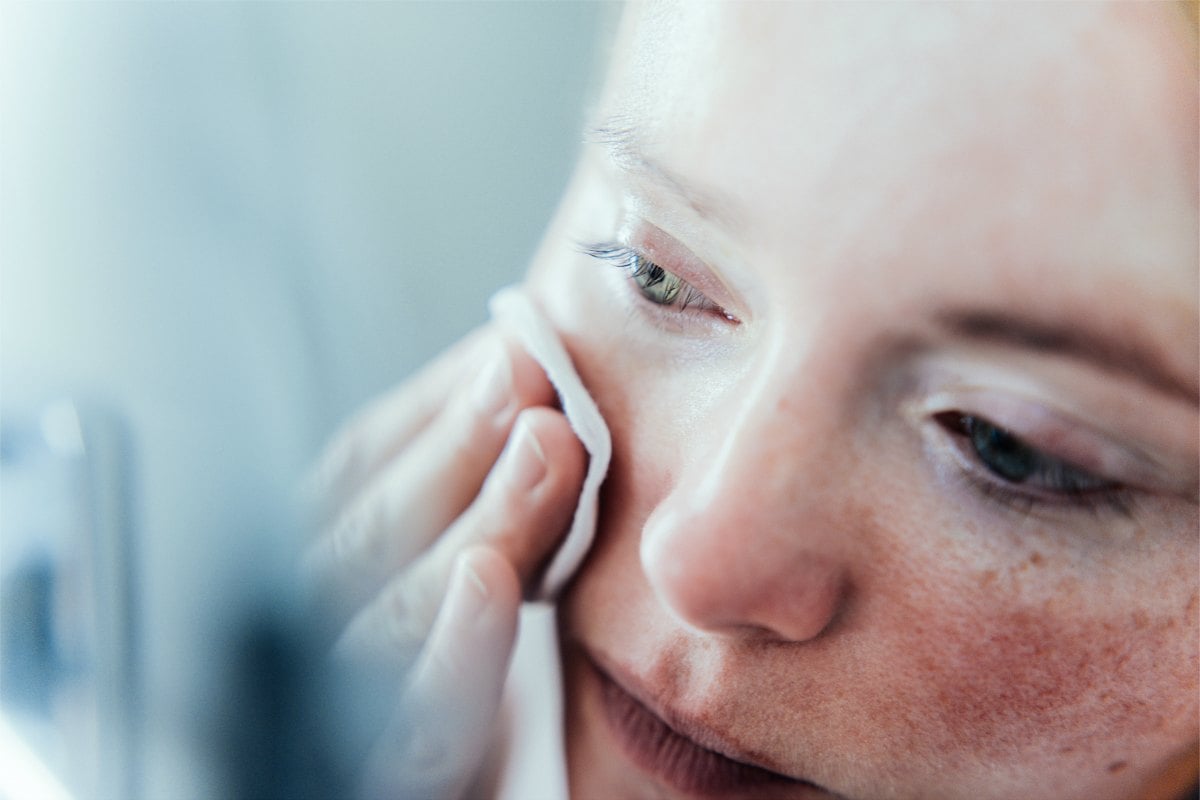
Hello everyone. Today we are going to have a very basic science lesson on chemical exfoliants.
When I say basic I mean really basic, so it’s easy to understand – because it’s a damn well confusing topic. I’ll aim to keep it super simple so please, professor expert types, don’t come after me with your thousand page thesis…that’s how we all got so confused in the first place.
Shall we begin?
Take a tour in beauty editor, Leigh Campbell’s beauty bag. We’re jumping straight in.
Unlike a scrub, which uses physical particles to sloth away dead skin cells, a chemical exfoliant has no ‘bits’ in it. Instead, it uses acid to gently eat away at the top dead layers and promote cell renewal.
Those acids are called Hydroxy Acids. There are two classes of Hydroxy Acids: you’ve got your Alpha Hydroxy Acids (AHAs) and your Beta Hydroxy Acids (BHAs). There are two classes because of how the molecules differ. Let’s look at AHAs first.
In the AHA family there’s a couple of options, made from varying ingredients and sometimes doing slightly different things:
Glycolic acid
Great for pigmentation, light scarring, fine lines and dullness, glycolic acid is probably the most popular of all the AHAs. It’s made out of plants high in sugar.
Citric acid
Made out of, you guessed it, citric fruits, citric acid is used to treat the same concerns as glycolic. It’s generally thought to be a little stronger, though that of course comes down to each product’s individual formulation.